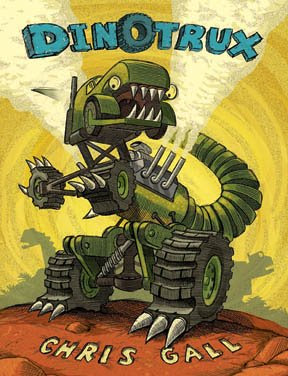Newly in paperback, Found by Margaret Peterson Haddix is a novel for middle grade readers and is Book One in her new series, The Missing. Haddix has plans for at least seven books in this series, due out at about one a year. Author of over twenty books, seven of them comprising the very popular Shadow Children Series, Haddix is known for writing suspenseful stories.
Because this is a suspense novel with surprises and twists, if you think you might read this book and don't want any of these revealed to you - which, in my opinion is the best way to read suspense - do not read this review. If you do not want a major plot point revealed and if you or your children plan to read this book and purchase it from a bookstore - DO NOT LOOK AT THE BACK OF THE DUSTJACKET of the hardcover. There is information pertinent to the second book in the series, due out in August of 2009, Sent. This information IS NOT revealed on the back of the library edition. If you don't mind reading a few spoilers, carry on!
Before I go on, I have to let you know some personal problems I have regarding suspense. I was the kind of kid who looked through closets and under beds for birthday presents. And I was the kind of kid who also felt a little cheated after opening them. When I read a suspenseful novel, written for children or adults, I usually skim the story so I can get to the action and have my questions answered. Then I always feel a little let down at the end. This is no reflcetion of the quality of the writing or the intricacies of the plot, in most cases. It's only a reflection of the kind of person and reader I am. This is exactly how I read the new, incredible teen book by Suzanne Collins, The Hunger Games, which is sort of a cross between Lois Lowry's Newbery Winner, The Giver and the television show Survivor. But with violence. There was a major plot twist that isn't revealed until almost the end and I inadvertently blew it for myself when I asked a coworker who had read the book an innocent question about wether or not it was going to be a series before I read it.
And, I'll be honest, that is exactly how I read Found, partly because of my little "problem," but also because I unintentionally got a little bit of information from the back of the hardcover dust jacket that spoiled one of the major plot points for me. Because of this, I skimmed along until the last chapter or so to find out how it all unravelled. So, any critiques I make of this book, please bear in mind my pre-existing prejudice and the fact that I skimmed part of it.
The plot: Jonah Skidmore knows he is adopted. He also knows that his sister Katherine, who at twelve is a year younger than him, is not. When Chip Winston moves to town and cryptic letters begin arriving for both of them, the mystery begins. Chip, who learns for the first time that he is adopted, becomes engrossed, along with Katherine, who, although she loves her brother and wants to help him, also seems to really enjoy spinning her wheels and digging for clues and piecing things together. Jonah, for the most part, remains aloof and unsure. He doesn't care that he is adopted or who his birth parents are and thinks Chip is overreacting. However, as the odd incidents and coincidences begin to pile up, along with an important meeting with someone who has some answers, Jonah changes his mind and tries to lead his sister and friend to safety.
And just what do Chip, Jonah and Katherine discover? They learn, thanks to the one witness who would not cooperate with the government's gag order, that thirteen years ago an airplane containing thirty-six infants, all approximately three months old, landed, or rather appeared out of nowhere, at Sky Trails gate 2B. There were no crew or pilots on board. The babies were removed and sent to adoption agencies all over the country. Now, the families who adopted the babies have all moved back to the same three suburbs and are participating in a county run workshop for families with adopted children who are becoming teens. While the parents hear a lecture, the teens go on a hike to a cave where they will discuss "identity." Pretending to be absent adoptee Daniella McCarthy, Katherine tags along. Once in the cave the children are trapped by the session leaders who are really from the distant future. These men are employees of Interchronological Rescue, a company that travels back in time to save inconspicuous victims of suffering throughout time in their infancies and then adopt them out to loving parents. They begin by saving children who would have been murdered during the Spanish Inquisition. However, they can only rescue children who's presence (and absence) will not change history in major ways. Thus, they cannot rescue every victim of the Holocaust. However, according to the agency that polices time travel, Interchronological Rescue has become primarily interested in rescuing the famous or royal victims who died as children. Charles Lindbergh III, first famous kidnapping victim in America, the Romanov children, Virginia Dare, first child born to pilgrims on American soil, and Edward V of England and his brother, Richard of Shrewsbury, the two "Princes in the Tower," as immortalized by Sir John Everett Millais in his painting from 1878 are among their famous "rescues." The two princes were sent to the Tower of London in 1483, ostensibly for their own safety after they were declared illegitimate. Their uncle, Richard III, took over the throne and the two were never seen again. It is not known what became of them, if they lived or died, making them perfect candidates for traveling to the future. The princes are among the children who, through "time reversal" have been returned to their infancy so that they do not remember their pasts and can more readily adjust to life in the future, and are on the plane that lands at gate 2B. Chip turns out to be one of the princes and he and his "historical brother" are being sent back in time at the climax of the story. Jonah, who's historical identity is not revealed (yet) and Katherine link arms with them and are sent back to the fifteenth century along with them with the condition that, if they can fix the ripples in history created by the vagaries of the Interchronological Rescue company, they can return to the twenty-first century, their families and the lives they knew.
Haddix's plot concept is genius. I love the idea that people can be plucked from history, returned to infancy and grow up all over again in a utopian future. However, the two hundred and fifty pages it took to get to this plot development seemed like one hundred too many. Haddix has an odd way of mentioning an important plot detail out of the blue and then explaining it in dialogue a few lines later. I found it jarring to continually be reading (skimming...) along and stop to re-read something that didn't make sense then read on to find it explained in the next paragraph. Also, I found her characters a bit two-dimensional and too clever. Again, take my criticisms with a grain of salt, but, my favorite time travel trilogy for young adults that I have read recently and think is stunningly well written with well developed, complex child (and adult) characters is the Time Quake Trilogy by Linda Buckley-Archer which begins with Time Travelers.
That said, I happen to enjoy fifteenth century England and plan on reading Sent when it comes out in August to see what Jonah, Chip, Katherine and Alex do with themselves and what Haddix does with her interesting ideas. I am definitely open to the possibility that this story, writng and characters become more complex as the series progresses. In a FAQ page on her website, Haddix says that she intentionally kept Jonah's historical identity a secret and I am VERY curious to find out who he is!








